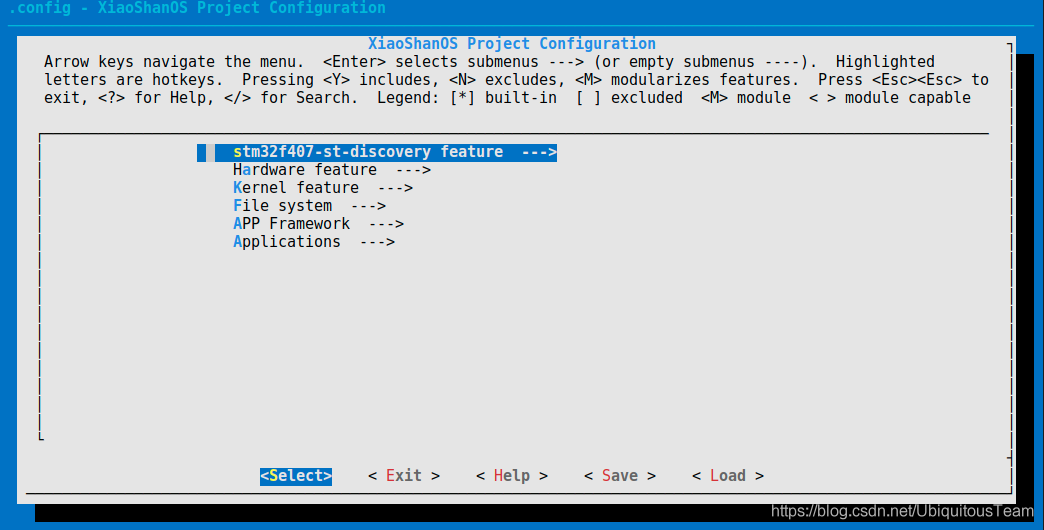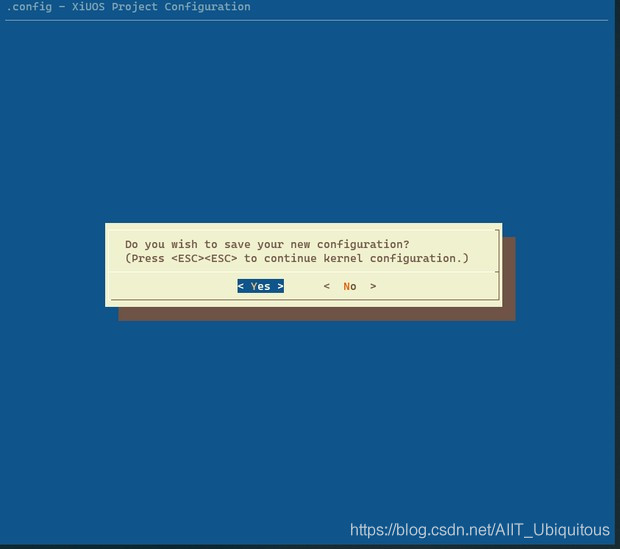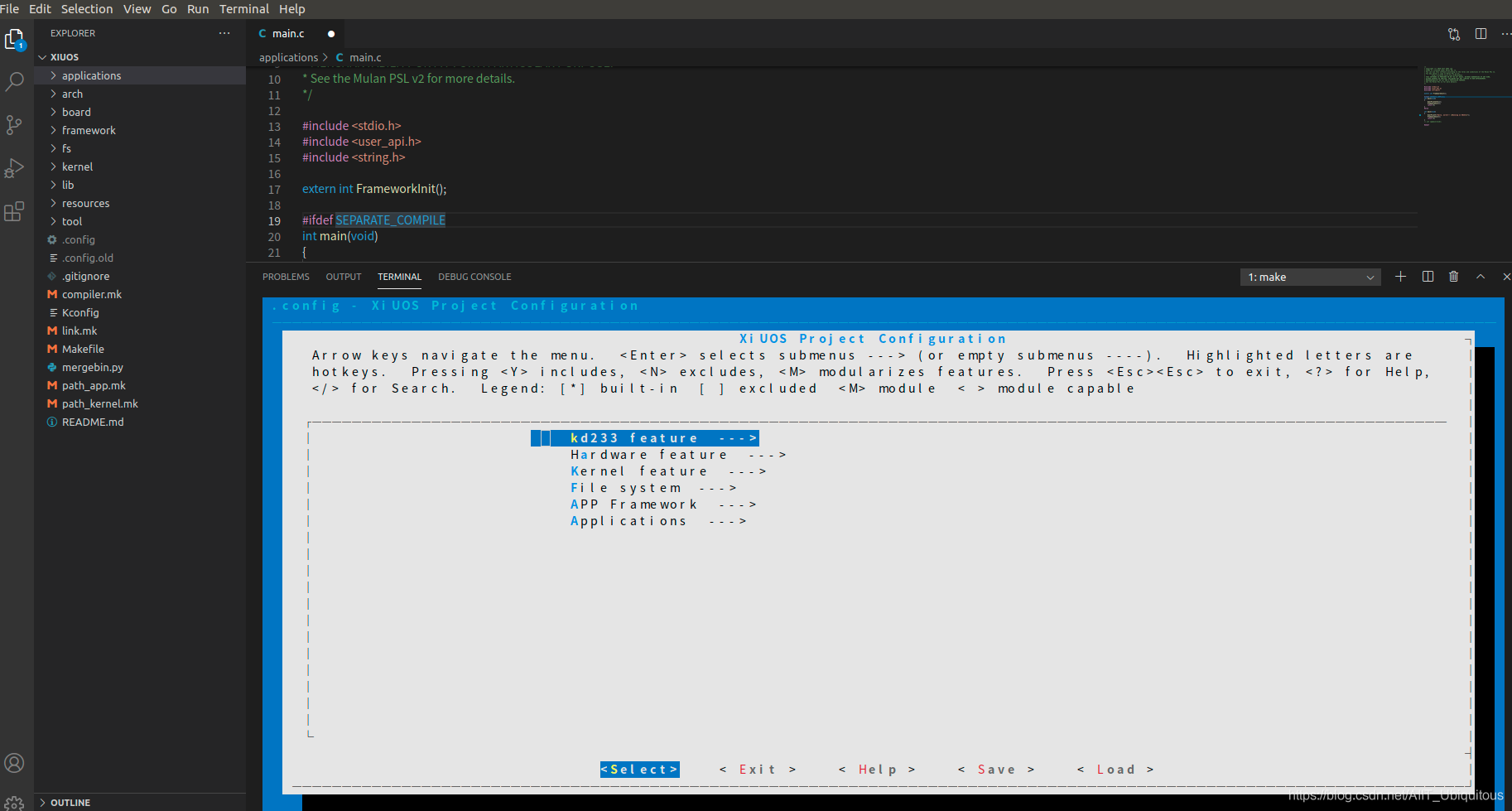# 从零开始构建矽璓工业物联操作系统:使用ARM架构的STM32F407-discovery开发板
XiUOS (opens new window) (X Industrial Ubiquitous Operating System) 矽璓工业物联操作系统是一款面向工业物联场景的泛在操作系统,来自泛在操作系统研究计划。所谓泛在操作系统(UOS: Ubiquitous Operating Systems),是支持互联网时代人机物融合泛在计算应用模式的新型操作系统,是传统操作系统概念的泛化与延伸。在泛在操作系统技术体系中,不同的泛在计算设备和泛在应用场景需要符合各自特性的不同UOS,XiUOS即是面向工业物联场景的一种UOS,主要由一个极简的微型实时操作系统(RTOS)内核和其上的智能工业物联框架构成,支持工业物联网(IIoT: Industrial Internet of Things)应用。
# 开发环境搭建
# 推荐使用
操作系统: ubuntu18.04 https://ubuntu.com/download/desktop (opens new window)
更新ubuntu 18.04源的方法:(根据自身情况而定,可以不更改)
第一步:打开sources.list文件
sudo vim /etc/apt/sources.list
第二步:将以下内容复制到sources.list文件
deb http://mirrors.aliyun.com/ubuntu/ bionic main restricted universe multiverse
deb http://mirrors.aliyun.com/ubuntu/ bionic-security main restricted universe multiverse
deb http://mirrors.aliyun.com/ubuntu/ bionic-updates main restricted universe multiverse
deb http://mirrors.aliyun.com/ubuntu/ bionic-proposed main restricted universe multiverse
deb http://mirrors.aliyun.com/ubuntu/ bionic-backports main restricted universe multiverse
deb-src http://mirrors.aliyun.com/ubuntu/ bionic main restricted universe multiverse
deb-src http://mirrors.aliyun.com/ubuntu/ bionic-security main restricted universe multiverse
deb-src http://mirrors.aliyun.com/ubuntu/ bionic-updates main restricted universe multiverse
deb-src http://mirrors.aliyun.com/ubuntu/ bionic-proposed main restricted universe multiverse
deb-src http://mirrors.aliyun.com/ubuntu/ bionic-backports main restricted universe multiverse
第三步:更新源和系统软件
sudo apt-get update
sudo apt-get upgrade
开发工具推荐使用 VSCode ,VScode下载地址为: VSCode https://code.visualstudio.com/ (opens new window),推荐下载地址为 http://vscode.cdn.azure.cn/stable/3c4e3df9e89829dce27b7b5c24508306b151f30d/code_1.55.2-1618307277_amd64.deb (opens new window)
# 依赖包安装
sudo apt install build-essential pkg-config git
sudo apt install gcc make libncurses5-dev openssl libssl-dev bison flex libelf-dev autoconf libtool gperf libc6-dev
源码下载: XiUOS https://forgeplus.trustie.net/projects/xuos/xiuos (opens new window) 新建一个空文件夹并进入文件夹中,并下载源码,具体命令如下:
mkdir test && cd test
git clone https://git.trustie.net/xuos/xiuos.git
打开源码文件包可以看到以下目录:
| 名称 | 说明 |
|---|---|
| application | 应用代码 |
| board | 板级支持包 |
| framework | 应用框架 |
| fs | 文件系统 |
| kernel | 内核源码 |
| resources | 驱动文件 |
| tool | 系统工具 |
使用VScode打开代码,具体操作步骤为:在源码文件夹下打开系统终端,输入code .即可打开VScode开发环境,如下图所示:

# 裁减配置工具的下载
裁减配置工具: 工具地址: kconfig-frontends https://forgeplus.trustie.net/projects/xuos/kconfig-frontends (opens new window)
mkdir kfrontends && cd kfrontends
git clone https://git.trustie.net/xuos/kconfig-frontends.git
下载源码后按以下步骤执行软件安装:
cd kconfig-frontends
./xs_build.sh
# 编译工具链
ARM: arm-none-eabi(gcc version 6.3.1),默认安装到Ubuntu的/usr/bin/arm-none-eabi-,使用如下命令行下载
sudo apt install gcc-arm-none-eabi
# 在STM32F407-DISCOVERY上创建第一个应用 --helloworld
# 1. 简介
| 硬件 | 描述 |
|---|---|
| 芯片型号 | Stm32F407VGT6 |
| CPU | arm cortex-m |
| 主频 | 168MHz |
| 片内SRAM | 192KB |
| 片上FLASH | 1MB |
| 外设 | -- |
| ADC、DAC、USB、GPIO、UART、SPI、SDIO、RTC、CAN、DMA、MAC、I²C、WDT、Timer等 |
XiUOS板级驱动当前支持使用GPIO、I2C、LCD、USB、RTC、SPI、Timer、UART和WDT等。
# 2. 编译说明
# 编辑环境:Ubuntu18.04
# 编译工具链:arm-none-eabi-gcc
使用VScode打开工程的方法有多种,本文介绍一种快捷键,在项目目录下将code .输入终端即可打开目标项目
修改applications文件夹下main.c
在输出函数中写入 Hello, world!!! \n Running on stm32f407-st-discovery完成代码编辑。
 编译步骤:
编译步骤:
1.在代码根目录下执行以下命令,生成配置文件
make BOARD=stm32f407-st-discovery menuconfig
2.在menuconfig界面配置需要关闭和开启的功能,按回车键进入下级菜单,按Y键选中需要开启的功能,按N键选中需要关闭的功能,配置结束后保存并退出

退出时选择yes保存上面所配置的内容,如下图所示:

若执行 make BOARD=hifive1-emulator menuconfig后出现以下界面:

解决的方法是将终端向上拉伸超过当前界面的三分之二以上,效果如下:

3.继续在VScode中执行以下命令,进行编译
make BOARD=stm32f407-st-discovery
4.如果编译正确无误,会产生XiUOS_stm32f407-st-discovery.elf、XiUOS_stm32f407-st-discovery.bin文件。其中XiUOS_stm32f407-st-discovery.bin需要烧写到设备中进行运行。
# 3. 烧写及执行
将 BOARD=stm32f407-st-discovery开发板SWD经 st-link 转接到USB接口,然后使用st-flash工具进行烧写bin文件。

# 烧写工具
ARM:ST-LINK(ST-LINK V2实物如图,可在购物网站搜索关键字购买)

下载并以下执行命令以下命令安装st-link工具(本文使用v1.5.1版本),下载地址为:http://xuos.io/downloads/stlink-1.5.1.zip (opens new window)
sudo apt install libusb-dev
sudo apt install libusb-1.0-0-dev
sudo apt install cmake
cd stlink
make
cd build/Release && make install DESTDIR=_install
将生成的st-flash(在stlink/build/Release/bin文件夹下)复制到/usr/bin下就可使用了
代码根目录下执行st-flash工具烧录
sudo st-flash write build/XiUOS_stm32f407-st-discovery.bin 0x8000000
此外,推荐用户使用putty作为终端工具,安装命令如下:
sudo apt install putty
打开putty配置串口信息
sudo puty
选择ttyUSB0(这个端口号根据具体情况而定),配置波特率为115200。

注意:选择正确的终端端口号,最后可以执行以下命令,清除配置文件和编译生成的文件
make BOARD=stm32f407-st-discovery distclean
# 3.1 运行结果
如果编译 & 烧写无误,将会在串口终端上看到信息打印输出,(终端串口引脚为PB6、PB7)。
